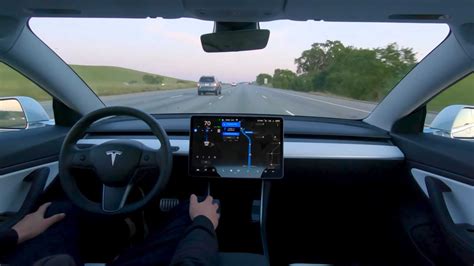Tesla’s Full Self-Driving (FSD) technology has been one of the most discussed and divisive innovations in the automotive world. The promise of a car that can navigate itself through complex urban and highway environments is a vision straight out of science fiction. Yet, despite the enthusiasm and hefty investments, users are finding that reality doesn’t always match the glossy marketing brochures. As someone who has closely followed Elon Musk’s ventures and the progress of autonomous driving, I am both impressed and wary of the current state of Tesla’s FSD.
A significant gripe shared by users is that FSD does not yet deliver the seamless and stress-free driving experience it promises. Comments from various users reveal a pattern of relying on FSD for certain types of trips while feeling that it cannot be trusted entirely. For instance, one user noted that FSD is great on highways but still prone to ‘phantom braking’ and erratic lane changes, leading them to take manual control more often than not. This observation points to one of the core issues—partially automated systems may require even more vigilance than manual driving because drivers must be ready to intervene at a moment’s notice.
Another crucial aspect is the divergence in user experiences, depending heavily on location and driving conditions. While some users report good performance in familiar environments with predictable patterns, others recount nerve-wracking situations where the system failed to respond appropriately. For example, FSD’s struggle with recognizing and responding to emergency vehicles and erratic pedestrian movements sets it apart from human drivers, who can generally adapt to these unpredictable variables more fluidly. This inconsistency is problematic when safety is at stake, making the technology hard to endorse wholeheartedly.
It’s interesting to compare Tesla’s approach with other companies in the autonomous driving space. Waymo, for instance, has taken a more conservative and arguably thorough approach by restricting their self-driving systems to geo-fenced urban areas where the technology has been rigorously tested. Tesla, on the other hand, employs a more ambitious strategy of rolling out FSD for broader usage, hoping that data from real-world driving will accelerate its development. This approach, however, raises questions about the ethical implications of using real-world drivers as beta testers without fully addressing the potential risks.
The comments also reveal a broader social and political undercurrent in how people perceive Elon Musk and Tesla. Some users express a desire to distance themselves from Musk’s polarizing public persona, reflecting a shift from admiration to criticism as his endeavors get entangled with controversial political and social issues. One commenter articulated this by stating, “It’s a good car that I don’t want again… That’s just the stupidity of him,” pointing to how Musk’s actions and statements impact consumer sentiment. This sentiment underscores a fascinating shift where tech products are increasingly judged not just on their technical merits but also on the socio-political stances of their creators.
There’s also the aspect of commercial and legal accountability. Tesla’s marketing tactic of promising ‘full’ autonomy has been met with skepticism, especially when users pay a premium for a feature that remains in beta. Some have pointed out that the company’s approach could invite legal issues, particularly from users who purchased the technology based on optimistic timelines that were not met. Regulatory bodies are starting to scrutinize these claims more closely, which could have significant repercussions for Tesla if it fails to deliver on its promises.
From a technological standpoint, the comments highlight the need for iterative improvement and the handling of edge cases—situations that occur infrequently but are critical from a safety perspective. One user insightfully compared the development of FSD to the limitations of deep learning models in general, where achieving high performance on standard scenarios is offset by significant challenges in managing rare but impactful events. The analogy extends to other machine learning applications that show promising results in controlled environments but struggle with real-world complexities.
The future of autonomous driving seems reliant on achieving a balance between technological advancements and human factors. Enhancements in model-based learning, real-time updates, and better communication between autonomous systems and human users are vital steps forward. However, without addressing the underlying ethical, legal, and social implications, the technology risks remaining a sophisticated but impractical novelty. As Tesla continues to iterate on FSD, it must also recognize the growing scrutiny and expectations from its user base and the broader public.
Ultimately, the discourse around Tesla’s FSD exemplifies the broader challenges of bringing cutting-edge technology to market. As someone with a vested interest in seeing autonomous driving succeed, I hope that Tesla, along with other players in the field, can navigate these challenges and deliver a product that genuinely enhances safety and driving convenience. Until then, the cautious optimism of users and their nuanced critiques provide a litmus test for the viability and acceptance of self-driving technology in its current form.


Leave a Reply